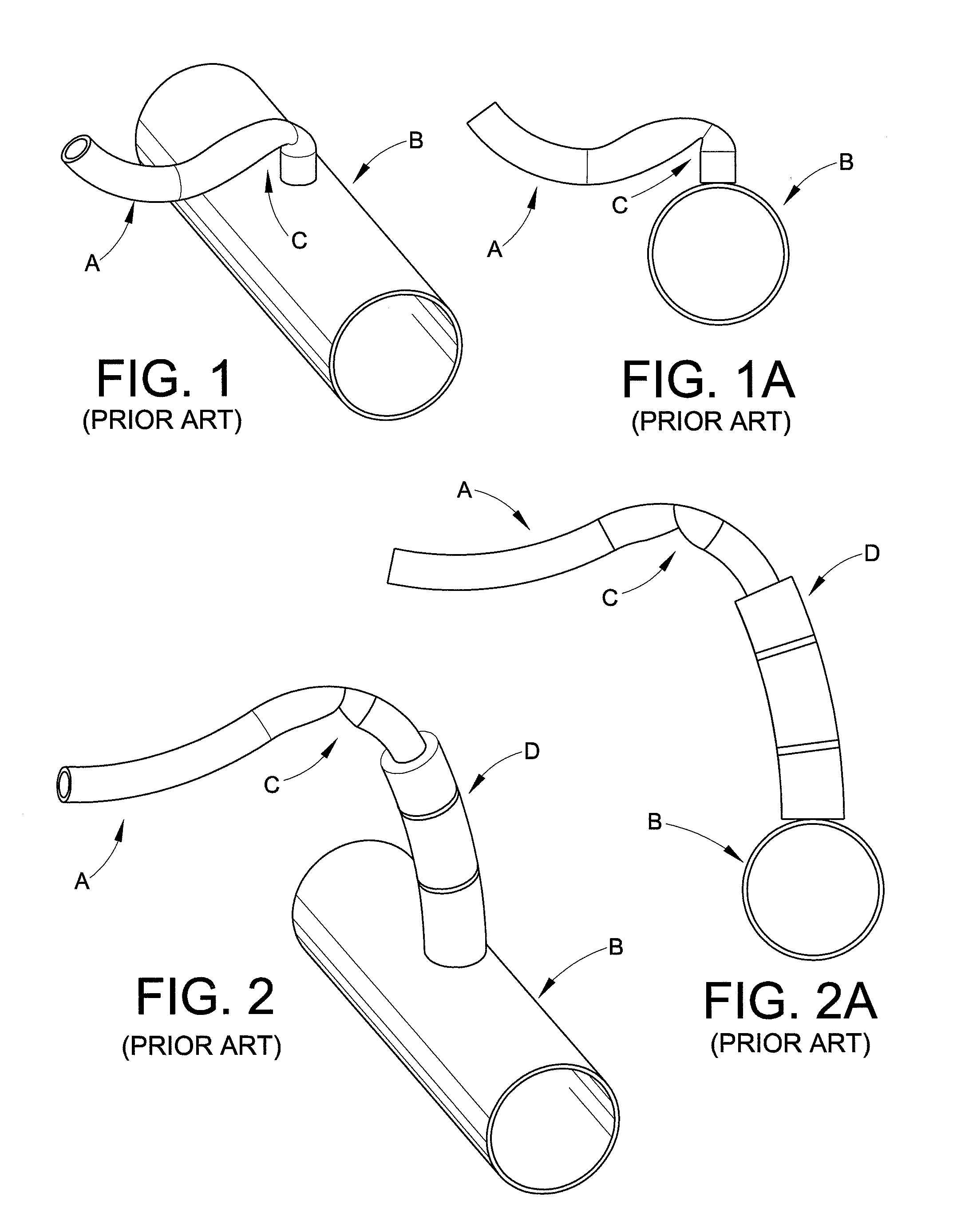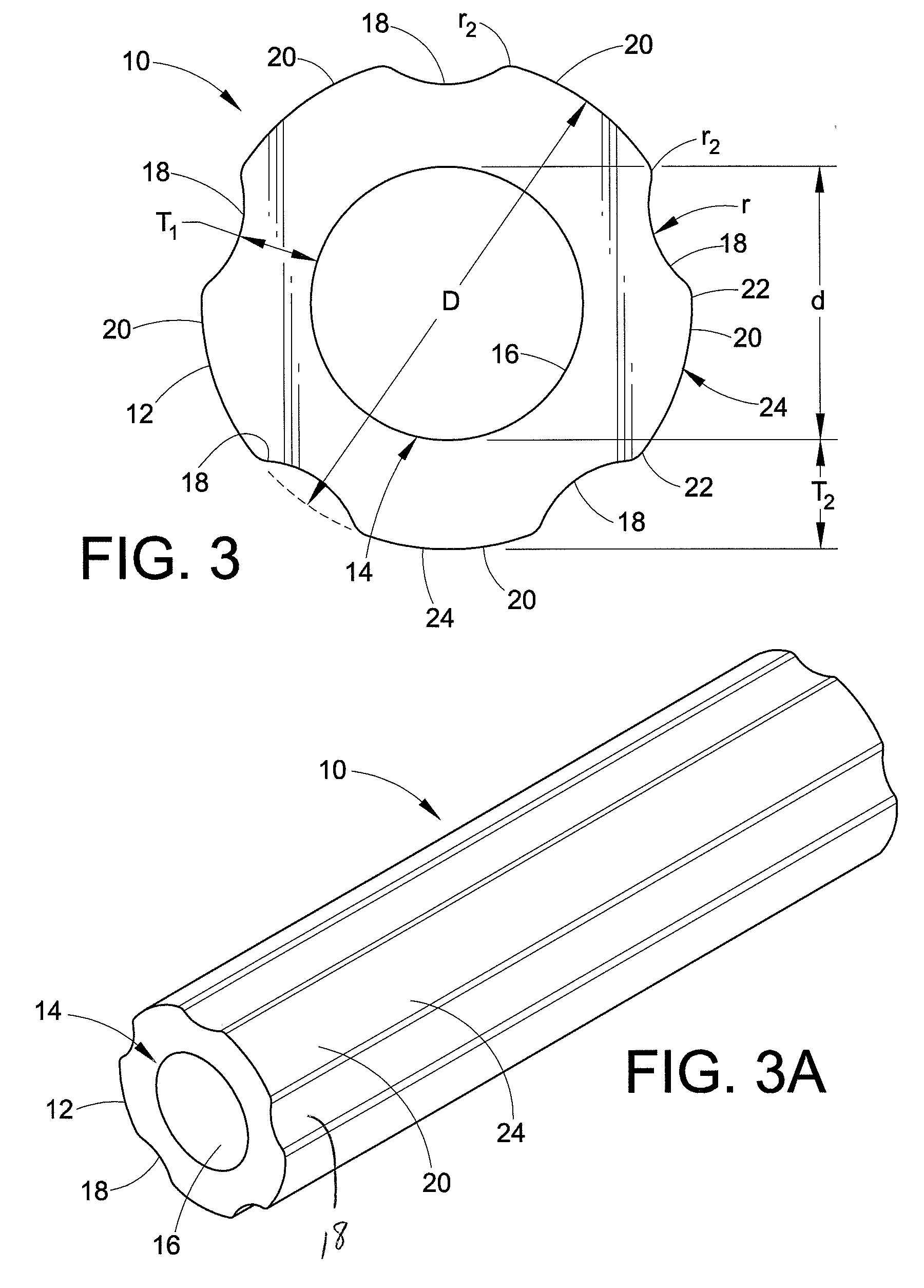Ribbed hose for milk extraction
- Summary
- Abstract
- Description
- Claims
- Application Information
AI Technical Summary
Benefits of technology
Problems solved by technology
Method used
Image
Examples
Embodiment Construction
[0025]With reference to FIG. 1, an existing milk extraction hose A is shown in a kinked or bent configuration. That is, due to the thinness of the walls of the hose, the hoses are bent or kinked and are unable to function properly to extract milk from a cow and deliver the milk to a tube or pipe B of a milking station for further processing of the milk for consumption. Milk extraction hoses remain under a constant vacuum ranging from about 10.5 in hg to 15.0 in hg. As a result of being exposed to such a vacuum, the compound of each hose deteriorates and loses the strength to maintain the hose's inside walls as a uniformly round or circular opening, the result of which is collapse of the original round hose shape into an oval or oblong shape, which is followed by a kink or bend C in the hose as shown in FIG. 1. A change in the inner opening or space and kinking create pressure differences and a restriction or change of vacuum and reduced flow rate in the hose during the harvesting of...
PUM
 Login to View More
Login to View More Abstract
Description
Claims
Application Information
 Login to View More
Login to View More - Generate Ideas
- Intellectual Property
- Life Sciences
- Materials
- Tech Scout
- Unparalleled Data Quality
- Higher Quality Content
- 60% Fewer Hallucinations
Browse by: Latest US Patents, China's latest patents, Technical Efficacy Thesaurus, Application Domain, Technology Topic, Popular Technical Reports.
© 2025 PatSnap. All rights reserved.Legal|Privacy policy|Modern Slavery Act Transparency Statement|Sitemap|About US| Contact US: help@patsnap.com



